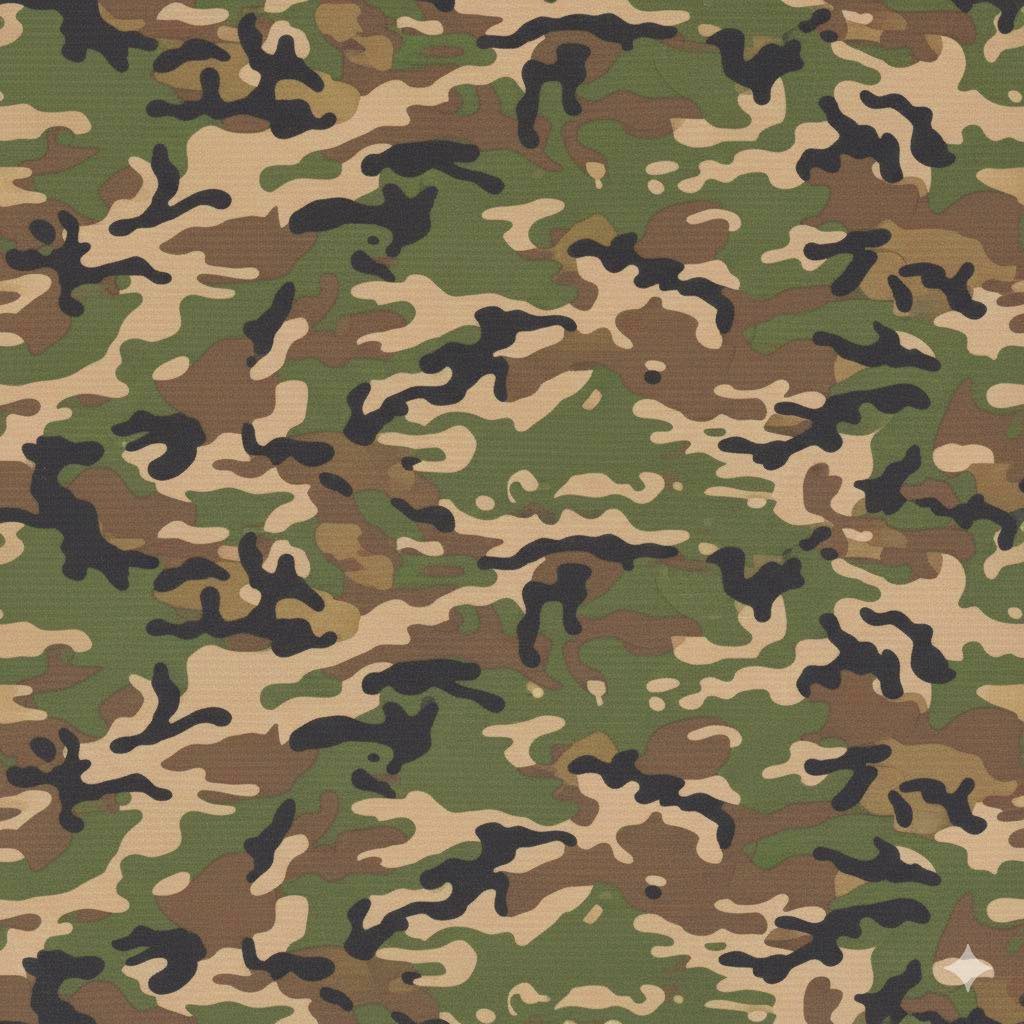
From Nature to the Military
Camouflage has its roots in nature. Many animals, from tigers to chameleons, have natural patterns that allow them to blend into their surroundings. Early military strategists studied these techniques, eventually applying them to uniforms and equipment to conceal soldiers on the battlefield.
By the late 19th and early 20th centuries, European armies began experimenting with irregular colors and disruptive patterns. Camouflage quickly became a staple in both World Wars, evolving with each conflict to adapt to forests, deserts, snowfields, and urban landscapes.
The Evolution of Camouflage
Today, camouflage is not just one pattern. It includes dozens of variations: woodland greens, desert tans, digital pixel designs, and even blue-gray “urban” schemes. Each design is scientifically engineered to break up the human outline and confuse the eye.
Modern armies also use specialized camouflage for vehicles, aircraft, and naval ships. The effectiveness of a design is often tested against surveillance technologies like drones and night vision, making camouflage a constantly evolving science.
Symbolism and Psychology
While camouflage is practical, it also carries heavy symbolism. To many, it represents discipline, courage, and sacrifice. Soldiers wearing it embody the values of service and protection.
At the same time, camouflage can also signal power. In public marches, on posters, or even in fashion, the pattern conveys toughness, resilience, and solidarity. Its visual association with the military ensures it always attracts attention.
Camouflage in Everyday Life
What started as a tool of war has now entered mainstream culture:
-
Fashion: From jackets and sneakers to backpacks, camouflage prints have become trendy, often detached from their military origins.
-
Protest Movements: Activists sometimes wear camo to signal defiance or solidarity with grassroots struggles.
-
Art and Media: Artists use camouflage patterns to comment on themes of conflict, identity, or invisibility.
Interestingly, wearing camouflage in some countries is regulated. In certain nations, only military personnel are legally permitted to wear it, underlining its enduring link to authority.
A Universal Pattern
Despite national differences in style and color, camouflage has become one of the few truly global design languages. Whether in Bangladesh, the United States, or Africa, the sight of a green-and-brown disruptive pattern is instantly recognizable.
It has transcended its military origins, becoming a symbol of both strength and style — sometimes serious, sometimes playful.
Conclusion
The camouflage pattern shown above is more than just fabric. It is a story stitched across decades — of wars fought, identities expressed, and cultures shaped. Whether used in uniform on the battlefield, on the runway in fashion shows, or in digital art, camouflage continues to evolve while keeping its core purpose intact: to blend, to protect, and to send a powerful message.





